From H.G. Wells’ War of the Worlds to Andy Weir’s The Martian, our culture’s fascination with the Red Planet is nothing new. However, the ability to explore this distant world is much more recent in our history.
September 3rd marks the 44th anniversary of NASA’s successful landing of the Viking 2 spacecraft on the surface of Mars. Coming less than three months after humankind’s first robotic explorer touched down on our planetary neighbor, this accomplishment proved that exploring Mars was not a fluke and paved the way for a constant presence of robotic explorers that we are accustomed to today.
In 2020, three separate space missions from the United Arab Eremites (UAE), China, and the United States are on their way to Mars. As we anticipate the arrival of these crafts in early 2021, let’s take a look back at the missions and robots that have taken us from Earth to Mars.
Flybys and Failures
Attempts to visit Mars began a mere three years after the Soviet Union launched the world’s first satellite, Sputnik 1, in 1957. The early 1960’s featured the launch, and failure, of six probes destined for Mars by the USSR and the United States.
On July 14, 1965, NASA’s Mariner 4 was the first craft to successful flyby Mars sending us our first close-up images of the Red Planet.

Credit: NASA
Between 1965 and 1970, the Soviets launched 4 more probes to Mars, all of which failed. NASA followed up their early success with the Mariner 6 and 7 probes in 1969. These flybys featured better quality imaging and hoped to give a more complete picture of the Martian surface to help in planning future missions to Mars.
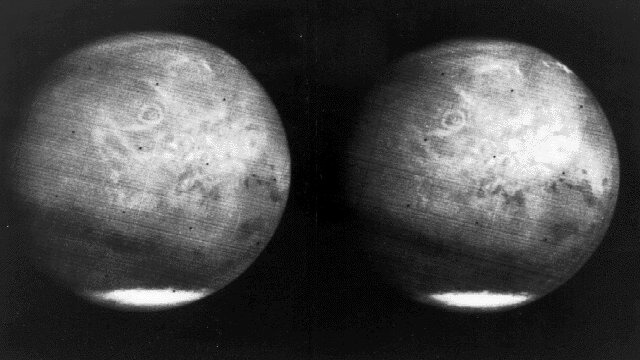
Credit: NASA
First Contact
In 1971, NASA placed the first spacecraft into orbit around Mars. The Mariner 9 orbiter was able to map over 85% of the Martian surface and transmit a whopping 7,000 images back to Earth. Pictures from this mission provided the first detailed views of Mars’ most recognizable features, such as the massive canyon system Valles Marineris and its two moons Phobos and Deimos.
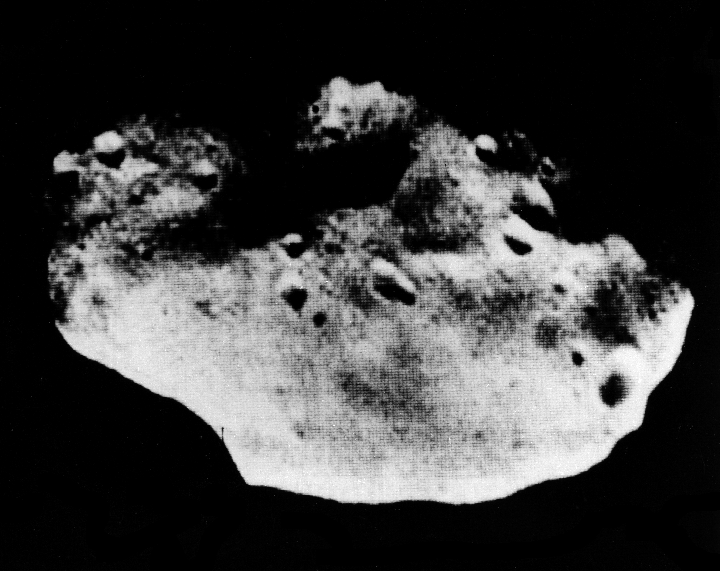
Credit: NASA
Also in 1971, the Soviet Union had their first successful mission to Mars with the arrival of their Mars 2 orbiter on November 2nd. This was followed by the Mars 3 mission which succeeded in putting an orbiter around the Red Planet, but is remembered for a lander that failed only seconds after touching down on the surface of Mars.
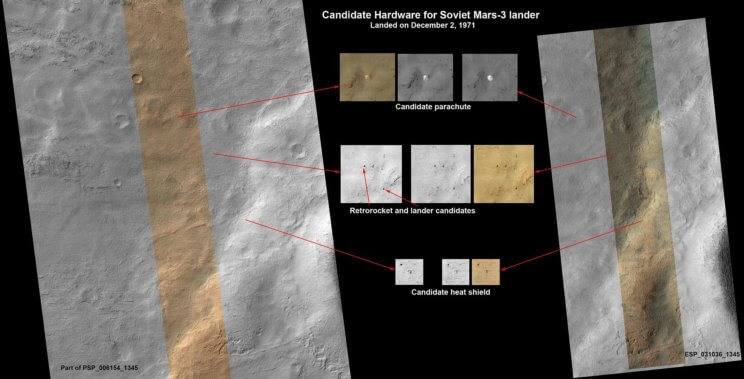
Credit: NASA, HiRISE, MRO
The first successful surface missions on the Red Planet occurred in 1976 with the landing of NASA’s twin Viking 1 and 2 spacecraft. In addition to taking photographs and collecting other science data on the Martian surface, the crafts conducted three experiments designed to look for signs of life. While no conclusive evidence of life as we know it was found, the Viking landers and orbiters were an undisputed success, long outliving their life expectancy and being responsible for the bulk of scientific knowledge about the Red Planet up until the early 2000’s. Viking 2 would send back data till 1980 and contact was lost with Viking 1 on November 13, 1982.
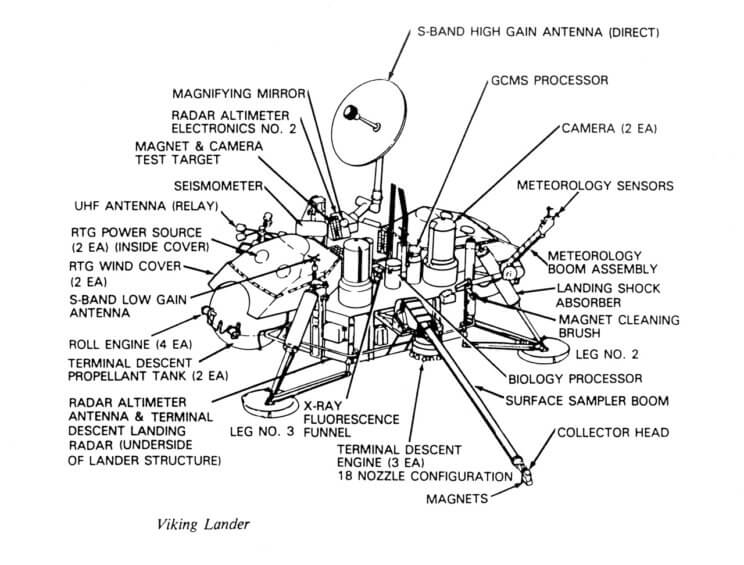
Credit: NASA/JPL
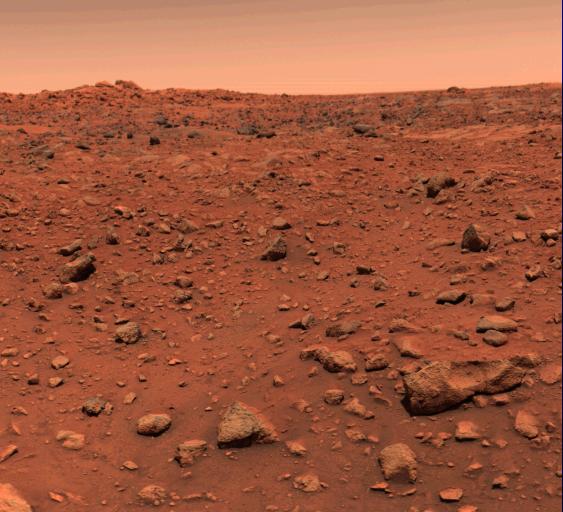
Credit: NASA/JPL
The Second Wave
After a relative drought during the 1980’s, the last decade of the 20th century brought important firsts, and several embarrassing failures, in the continued exploration of Mars. NASA launched three missions in the decade that were lost prior to successfully exploring the Red Planet – the Mars Observer spacecraft in 1992, the Mars Climate Orbiter in 1998, and the Mars Polar Lander in 1999.

Credit: slideplayer.com
Despite the challenges of spaceflight, NASA succeeded with their Mars Global Surveyor (MGS) orbiter in 1997, which mapped the the surface of Mars for nearly a decade discovering evidence of ancient water on the Red Planet. Even more significant was the successful landing of Pathfinder and the Sojourner rover in July 1997. Sojourner was the first rover to explore Mars and covered approximately 100 meters over 83 days on the Martian Surface.
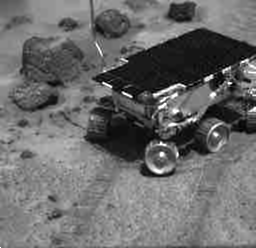
Credit: NASA/JPL
NASA was not alone in the exploration of Mars during the 1990’s. The former Soviet Union’s space program had been inherited by Russia and Ukraine who launched the ambitious Mars 96 mission in 1996. Unfortunately, their hopes of reaching Mars were dashed after a rocket malfunction. Japan also joined the nations vying for the chance to explore our planetary neighbor when they launched their ill-fated Nozomi orbiter in 1998. While Nozomi failed to make it to Mars, this milestone marks the first time a nation other than the United States or the former Soviet Union would attempt to visit Mars.
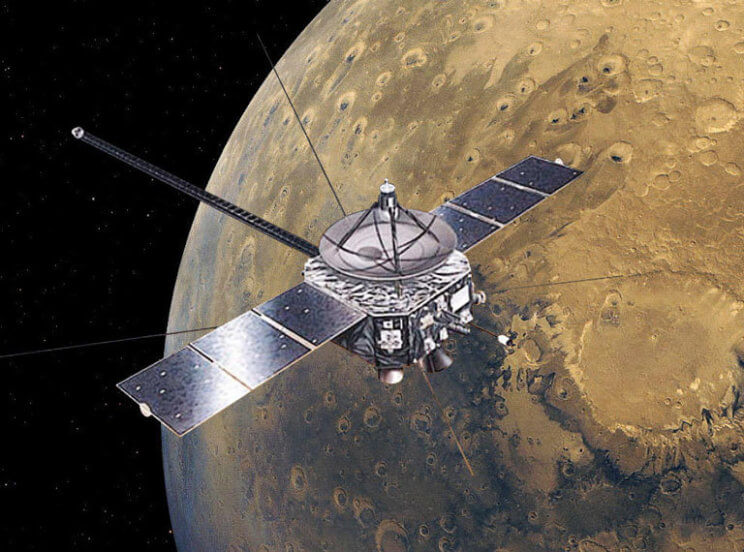
Credit: JAXA and ISAS
Exploration Continues
For nearly the last twenty years, we have had a continuous robotic presence in orbit and on the surface of Mars. Orbiters like NASA’s Mars Odyssey , the Mars Reconnaissance Orbiter , and the 2014 MAVEN mission have provided detailed views of the Martian surface and atmosphere while also acting as relay stations for data collected by surface missions.
Stationary landers like Mars Phoenix and Mars InSight have confirmed the existence of water ice under the Martian surface bolstering hope for human missions in the future.
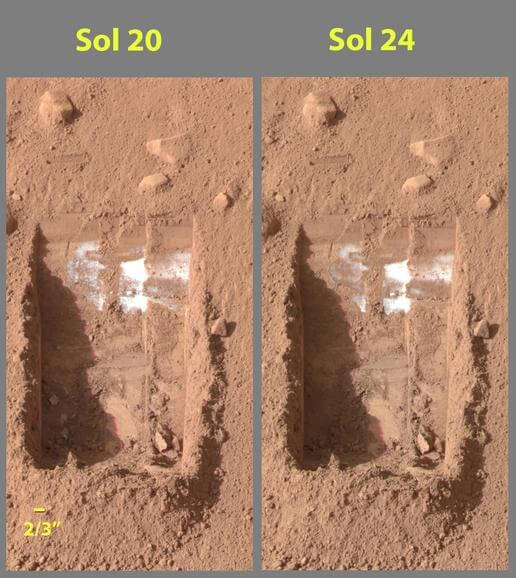
Credit: NASA/JPL-Caltech/University of Arizona/Texas A&M University
NASA’s rovers, Spirit, Opportunity, and Curiosity have helped us learn about our Martian neighbor and the potential for life in the solar system by leaps and bounds. Spirit and Opportunity found evidence that Mars may have been habitable for millions of years in the past, while Curiosity has discovered organic compounds on the Martian surface.
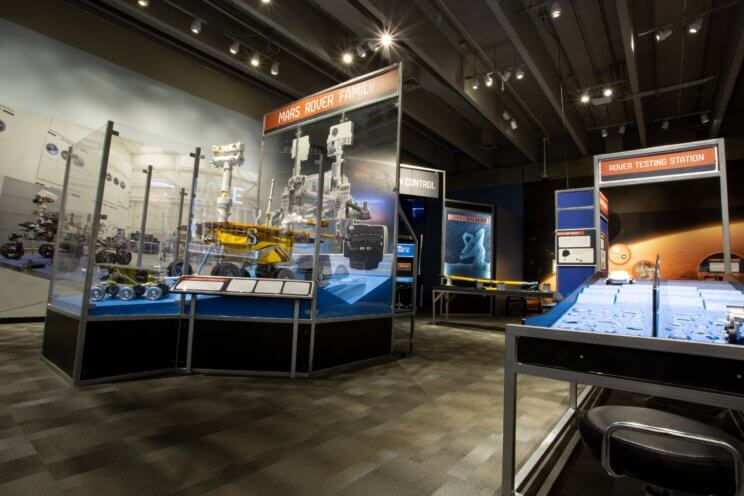
While NASA has found the most success exploring the Red Planet, Mars is increasingly being visited by international missions. Russia, Japan, the European Space Agency, China, India, and the United Arab Emirates, have all launched missions to Mars.
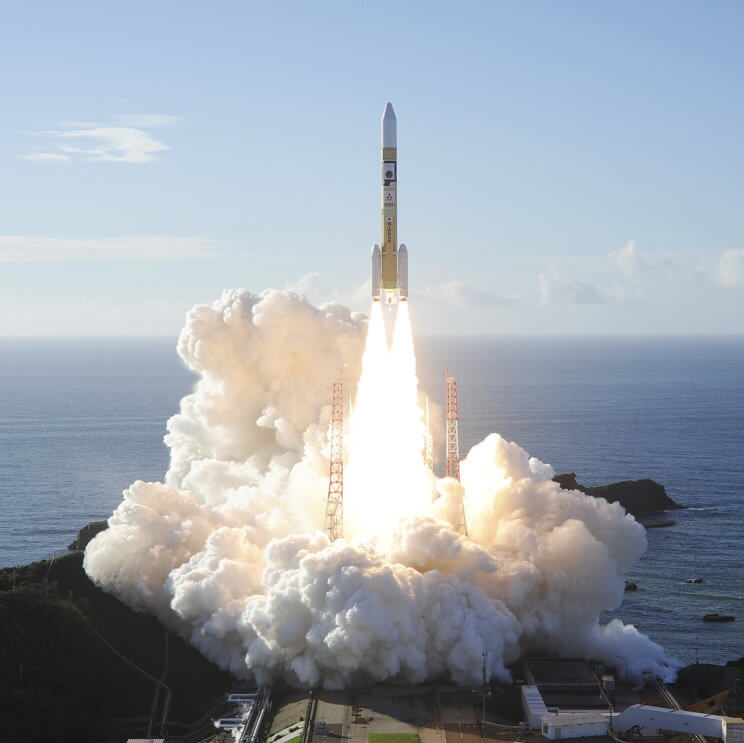
Credit: Mitsubishi Heavy Industries/AP
Seeing Red
If a half century of exploring Mars has taught us one thing, it is that reaching even one of our closest planetary neighbors successfully is challenging. Over 50% of missions sent to Mars since 1960 have failed or been lost. However, the future has never looked brighter for planetary exploration. Between the current missions still operating at Mars, the exciting spacecraft in transit this year, and planning in the works by NASA, SpaceX, and various international partners to send humans to Mars in the 2030’s, here is to hoping we will all be seeing red in the coming years.
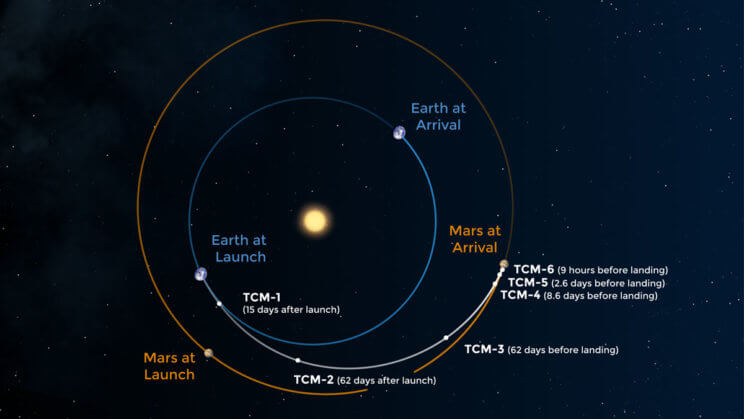
Credit: NASA/JPL-Caltech






